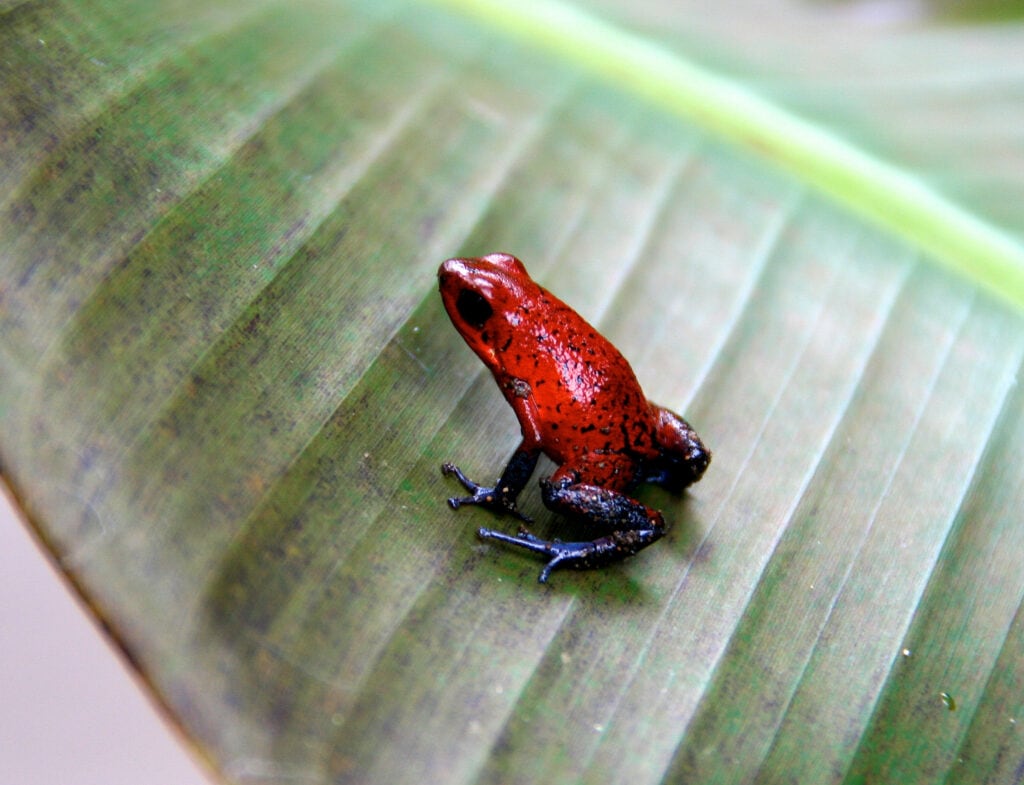The jungles of New Guinea have been known to be home to some toxic birds since at least the 1990s. In 1990, scientists handling the skin of the Hooded Pitohui reported numbness, burning, and discomfort resulting from the handling of this bird. It was determined that the feathers, skin, and even the bodies of Hooded Pitohuis contained a derivative of batrachotoxin, the same deadly neurotoxin which makes poison dart frogs so poisonous. The Hooded Pitohui joined an extremely small “family” of birds which contain this poison, most of whom are concentrated in the jungles of Papua New Guinea.
Related Article: Largest Ever Penguin Fossil Discovered in New Zealand
Now, two new birds have joined this exclusive club. A recent study has found batrachotoxin in the bodies and feathers of the Regent Whistler (Pachycephala schlegelii) and the Rufous-naped Bellbird (Aleadryas rufinucha).
Researchers studying the apparent toxicity of these two bird species reported similar discomfort to those researchers who handled the Hooded Pitohui in the 1990s. Direct contact with these birds results in a burning sensation, running eyes and noses, and locals even report that these birds are not often eaten because they “burn in the mouth like chili.”
Batrachotoxin is an extremely deadly neurotoxin and one of the world’s most potent. There is no known antidote for this deadly substance, however these birds seem to both tolerate its presence and even store it in their bodies, although at much lower and less dangerous concentrations than poison dart frogs.
It is believed that the toxin accumulates in the bodies of these birds from the beetles that make up a significant portion of their diet. Whether the poison simply accumulates because the bird has adapted to tolerate it, or whether these birds have incorporated this toxicity into their own defensive survival strategy, remains inconclusive.
It is worth noting that venom and toxicity are entirely different. Venomous animals produce toxic venom which they inject into prey by biting or stinging. These two new birds, as well as the other known toxic birds, merely contain high concentrations of poisonous substances within their bodies.
Papua New Guinea’s jungles and rainforests are home to some of the rarest birds in the world. Earlier this year, the Black-naped Pheasant-pigeon was found in New Guinea after over 140 years without a confirmed sighting. Research in this area is always breaking new ground and the birds of Papua New Guinea seem to be full of unexpected surprises. It remains to be seen if any of the other birds which share the habitat of the Rufous-naped Bellbird and the Regent Whistler might share in this unique adaptation.
Popular Article: Invasive Snails Bolster Threatened Bird Population in Florida

